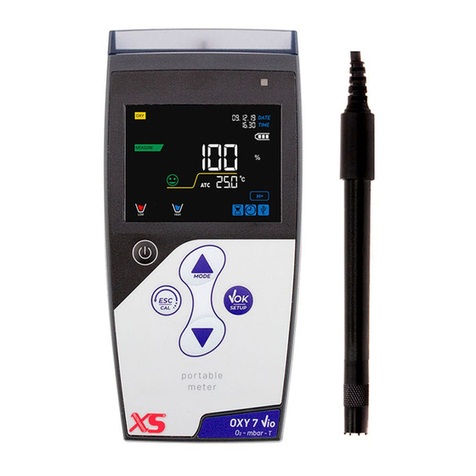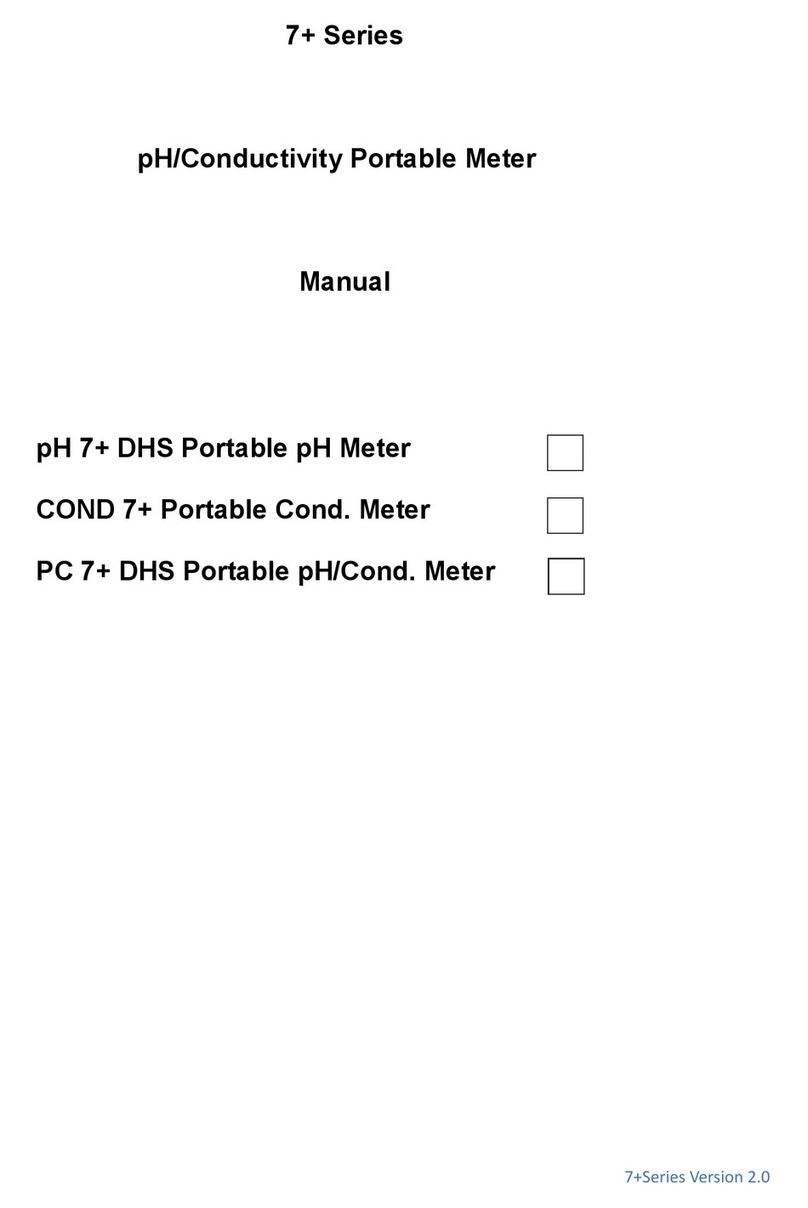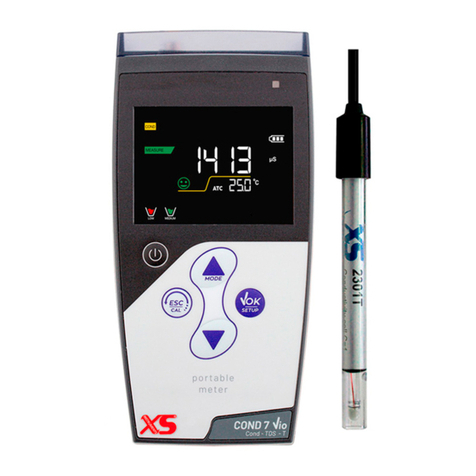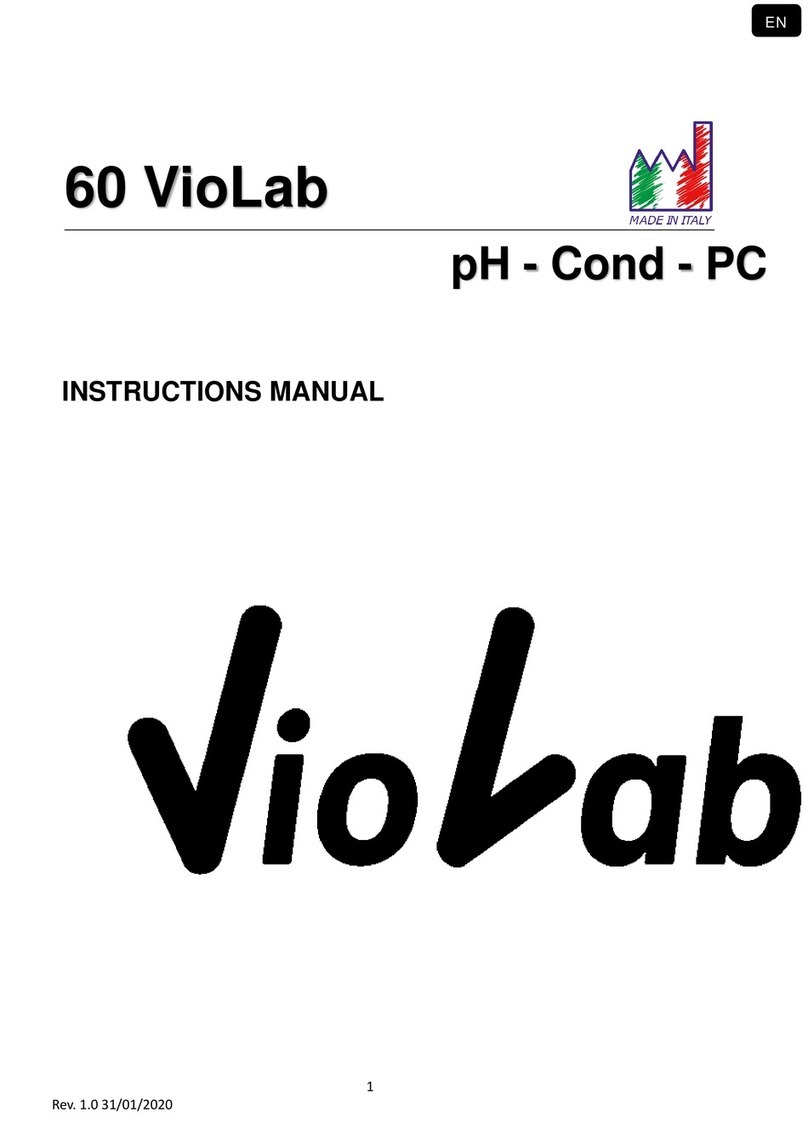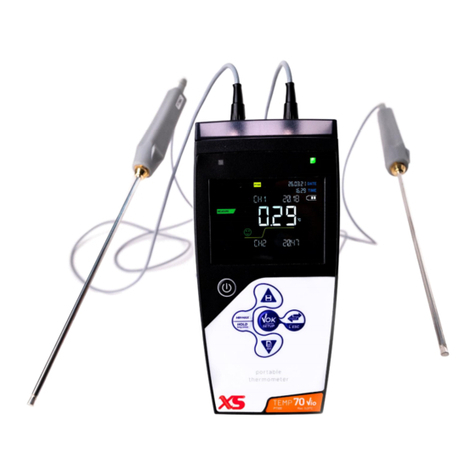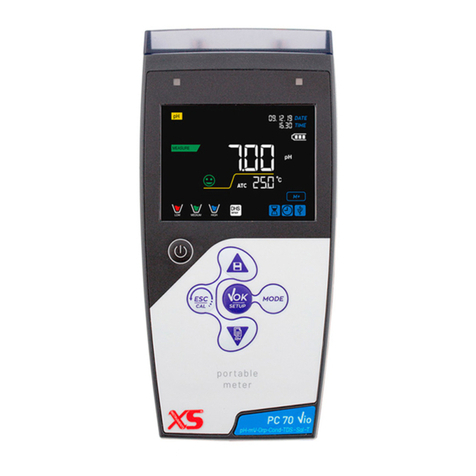Index
Introduction.............................................................................................................................................................4
Measurement parameters.......................................................................................................................................4
Basic features...........................................................................................................................................................4
pH measurement features (suited for model pH70+DHS and PC70+DHS) ..............................................................4
Conductivity measurement features (suited for model COND70+ and PC70+DHS) ................................................4
Data sheet................................................................................................................................................................5
Instrument Description............................................................................................................................................6
LCD Display ..............................................................................................................................................................6
Keypad Functions.....................................................................................................................................................6
Meter Connections ..................................................................................................................................................7
Stability indication ...................................................................................................................................................8
Parameter selection.................................................................................................................................................8
Automatic Power Off ...............................................................................................................................................8
DHS Technology .......................................................................................................................................................8
pH Measurement.....................................................................................................................................................9
pH electrode information ........................................................................................................................................9
pH calibration consideration - Standard buffer solution..........................................................................................9
Three-point calibration ............................................................................................................................................9
Calibration Intervals.................................................................................................................................................9
Due calibration.......................................................................................................................................................10
Check calibration date ...........................................................................................................................................10
pH Meter Calibration .............................................................................................................................................10
Customer calibration .............................................................................................................................................11
Measurement ........................................................................................................................................................12
Factory default setting ...........................................................................................................................................12
Self-diagnosis information .....................................................................................................................................13
pH electrode maintenance ....................................................................................................................................13
Daily maintenance .................................................................................................................................................13
Calibration buffer solution.....................................................................................................................................13
Protect glass bulb...................................................................................................................................................13
Regenerate glass bulb............................................................................................................................................13
mV measurement ..................................................................................................................................................14
ORP ........................................................................................................................................................................14
Clean and activate ORP electrode..........................................................................................................................14
Conductivity...........................................................................................................................................................14
Conductivity cell ....................................................................................................................................................14
Conductivity cell constant......................................................................................................................................14
Conductivity calibration solutions .........................................................................................................................15
Calibration intervals...............................................................................................................................................15
1-point and multi-point calibration .......................................................................................................................15
Reference temperature..........................................................................................................................................15
